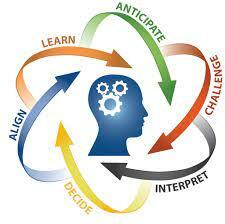e-Learning Ecologies MOOC’s Updates
EPortfolios
As someone who returned to school 25 years after I completed my undergraduate degree, one of the most exciting and effective tools that I worked with recently was the eportfolio. The eportfolio is greatly encouraged by the Association of American Colleges and Universities (AACU) because it is so effective at documenting and supporting the development of the skills they define as essential learning outcomes (ELOs) for all college students. The AACU considers the use of eportfolios a “high-impact practice (HIP).
Conceptually, an eportfolio is a digital repository of a student’s work across a period of time, usually one semester. However the eportfolio can be used across semesters (sometimes for the entire academic career) and can be tailored to a variety of content areas, so it can encompass the depth and breadth of learning in an amazing way. A critical component of eportfolios is student reflection. This can be accomplished by periodic or summary writing reflections, although there are other ways to do reflection work. This type of thinking-about-thinking (metacognition) facilitates transfer of knowledge, particularly for high-level abstract concepts.
The versatility of this tool was particularly obvious to me as a creative writing student. The portfolio could include scaffolded assignments, multiple drafts of a single larger project, many projects across genres or all of these together. This example of reflexive pedagogy has two major benefits for students and teachers built into it: 1. It makes the efforts the student is making visible to both the student and the teacher. Traditional didactic approaches ask a student to produce a 5-7 page paper, and then this essay is assessed out of context of the production process. Eporfolios show more of the twists and turns in skills that are particularly recursive like writing and allows both the student and teacher to celebrate them. What if the mediocre essay writer was an amazing researcher? What if they were fantastic at editing or peer feedback? 2. Eportfolios can be particularly helpful as students reach a later stage of their academic work in one area. It may help students determine what type of career best suits them, it may contain samples for future job applications or the seed of a PhD dissertation. Or in my case, it helped me develop my Master’s thesis! It also helped me because I had writing samples that I could publish.



Interesting!